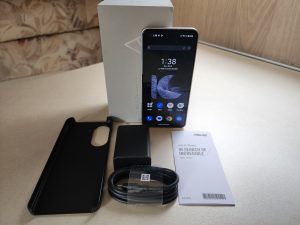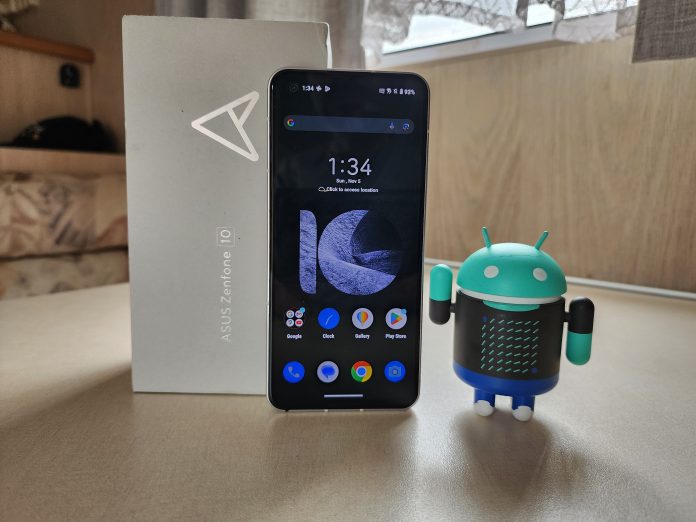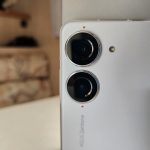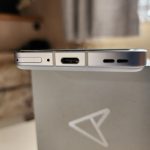ASUS has once again launched a new compact Android which follows in the footsteps of last year’s Zenfone 9, which we reviewed and found it was a great compact Android device that just needed some improvements and updates. You can read that full review of the Asus Zenfone 9 here.
So ASUS has now launched its successor, the Zenfone 10, which follows a similar compact design as its sibling last year, and we wanted to see what improvements and changes ASUS have made and brought to the new Zenfone 10, especially the cameras.
So, can the ASUS Zenfone 10 be a true successor to the Zenfone 9. Over the last a full couple of weeks, I’ve been putting the device through its paces and I’d like to share that experience with you.
What’s in the box
Inside the box you get the actual device, 30W wall charger, 1 meter USB-C to USB-C charging port, ejector pin (SIM tray needle), plastic phone case alongside the usual warranty and user guide documentation.

It is important to note that ASUS has given us an international Zenfone 10, and this did include an international wall charger.
The design
Taking the device out of the box, you’ll notice how compact and light the device feels in your hand.
The Zenfone 10´s display is a 5.92-inch super AMOLED display 1080 x 2400 @ 445 ppi density, which is beautiful to view and enjoy. Colours are great, sharp and bright, however there are some small bezels around the edges, about 1-3 millimetres with the top and bottom having a little bit more of a chin than the actual sides. Whilst I would have liked to have seen ASUS make this an edgeless display it doesn’t hinder the experience or usage of the device.
The display at the front on the left-hand side houses a punch hold, which houses the front-facing 32MP selfie camera. It reminds me of some Android devices from a few years ago that had similar punch holes for the selfie camera. Personally, my preference would be for the punch hole to be in the top middle of the display. I can see why ASUS have done this so it doesn’t distract from the viewing experience but it’s a small preference on my part.
The sides are made of aluminium and the right hand side houses the standby/power button which also doubles as the device’s fingerprint sensor which works absolutely fast and easy is located in the middle left hand side of the device. Above the standby/fingerprint button is the volume rocker.
At the top of the Zenfone 10, you ́ll find the 3.5mm audio jack, and for a high-end device like the Zenfone to still come with a 3.5mm audio jack is extremely rare, and I can see that most or at least some people would be happy about this.
The left-hand side of the Zenfone 10 does not house anything, with the bottom of the Zenfone 10 having the USB-C port, which is located in the centre. To the right of the USB-C charging port and to the left of this you’ll find the SIM card tray port and the right of the charger is the speaker grill.
The rear of the Zenfone 10 is made of a matte plastic finish that has a little bit of a rough surface so as to not let it slip out of hand. Personally, I would have preferred a glass backing to help give it a more premium feeling, which this device is aimed for, but beggars can’t be choosers.
The rear also houses the dual rear cameras on the left hand side (well actually the right hand side) which you can miss. The dual rear cameras are made up of a 50MP wide angle lens (f/1.9, 24mm) which protrudes out more than the second lens by about 3 millimetres, and the second lens being a 13MP ultrawide angle lens which protrudes out of the back of the Zenfone 10 by about half a millimetre.
Under the hood, the Zenfone 10 is powered by an octa-core Qualcomm SM8550-AB Snapdragon 8 Gen, 16GB RAM, 512GB of onboard storage which sadly cannot be expanded so you will need to ensure you have enough cloud storage to upload your files and pictures. I will be going into this part further down in the review
ASUS have stated that the Zenfone 10 does support 15W wireless charging, so if you want and need a phone with wireless charging, then this device will tick that box off.
Lights, camera, action
The Zenfone 10 comes with a dual rear camera setup which is made up of 50MP wide angle lens (f/1.9, 24mm) and a 13MP ultrawide angle lens.
Some of the features in the camera app include slo-mo, timelapse, video, photo, portrait, pano, light trail, pro, pro video and night. ASUS has also included, like last year’s, Zenfone, a six-axis gimbal stabilisation system, which will help make your videos much smoother.
Taking photos on the Zenfone 10 during the day are pretty good, albeit the colours seem not as clear or popping and a little dull than in real life. Night photos are ok but if you can take a photo or video without moving then you will find the photos are very blurry.
The front facing camera is a 13MP lens which does again provide some good selfies but I did find that the quality carried between the brightness of the day with some oversaturated to dull but again this varies depending on the daylight and brightness of a room or when outside, the brightness of the sun during the day.
Performance and software
The Zenfone 10 as stated in the design section, is powered by an octa-core Qualcomm SM8550-AB Snapdragon 8 Gen, 16GB RAM, 512GB of onboard storage which sadly cannot be expanded so you will need to ensure you have enough cloud storage to upload your files and pictures.
The octa-core Qualcomm SM8550-AB Snapdragon 8 Gen processor is able to handle multitasking between various apps like Gmail, social media apps such as Facebook, X (formerly twitter), Instagram and more. Even playing games whilst on a small screen it is able to handle graphic intensive games to non-graphic intensive games like Mini Metro or pocket planes.
In terms of software, the Zenfone 10 does run Android 13 right out of the box and during the review period there were two security updates which were downloaded and installed. We further asked ASUS if the ZenFone 10 will be getting an upgrade to Android 14, which the company has confirmed it will be receiving this firmware update but in terms of timeframe, could be by the end of the year or early next year at this stage give or take the testing phases.
Battery life
The Zenfone 10 comes with a 4300mAh non-removable battery that can certainly pack a punch despite the device being much smaller than say a Samsung Galaxy Ultra 23.
However, the battery is able to get through a full day’s work by taking it off charge at about 6am and by the time I got home still having anywhere between 50% to 60% depending on the usage. With medium usage I still had about 50-60%, with some higher usage this did drop down a little but ASUS do offer battery saving setting which could see you get more out of the battery if you need the device to last a little bit longer.
Should you consider buying one?
I have to say there have been some improvements over last year’s Zenfone 9 with the new Zenfone 10 and honestly I am still a little baffled by the device given it is still a much smaller device compared to other high end devices which then Zenfone is technically marketed for.
That being said, if you do prefer a small device that still offers high-end features and capabilities, alongside having a 3.5mm audio jack and offers a good camera and user experience, then the Zenfone 10 could be the device you are looking for.
In all honesty, it is a device that could persuade me to rethink bigger is better, not that I am a size queen!
The Zenfone 10 is available through the JB Hi-Fi in either green, red, white, midnight black or starry blue for $1,299.

















How’s the reception/signal strength?
Hi Michael, mobile strength was pretty good but does vary depending on the network you use. I used both a Telstra and Optus SIM card in it and both were able to have decent signal coverage in North-Western Sydney
How’s the reception/signal strength though?